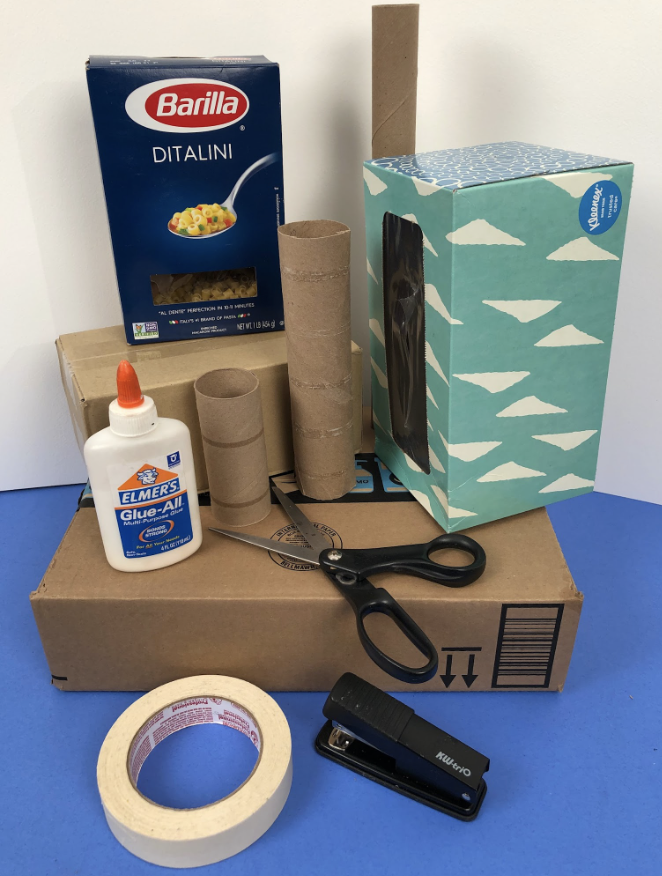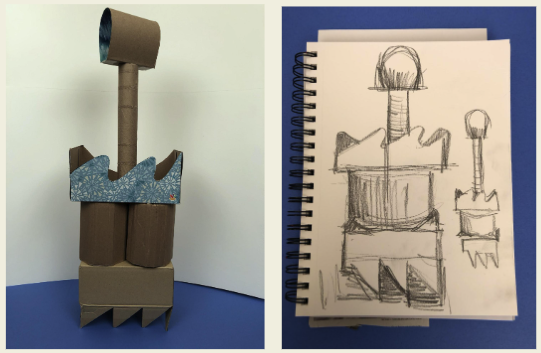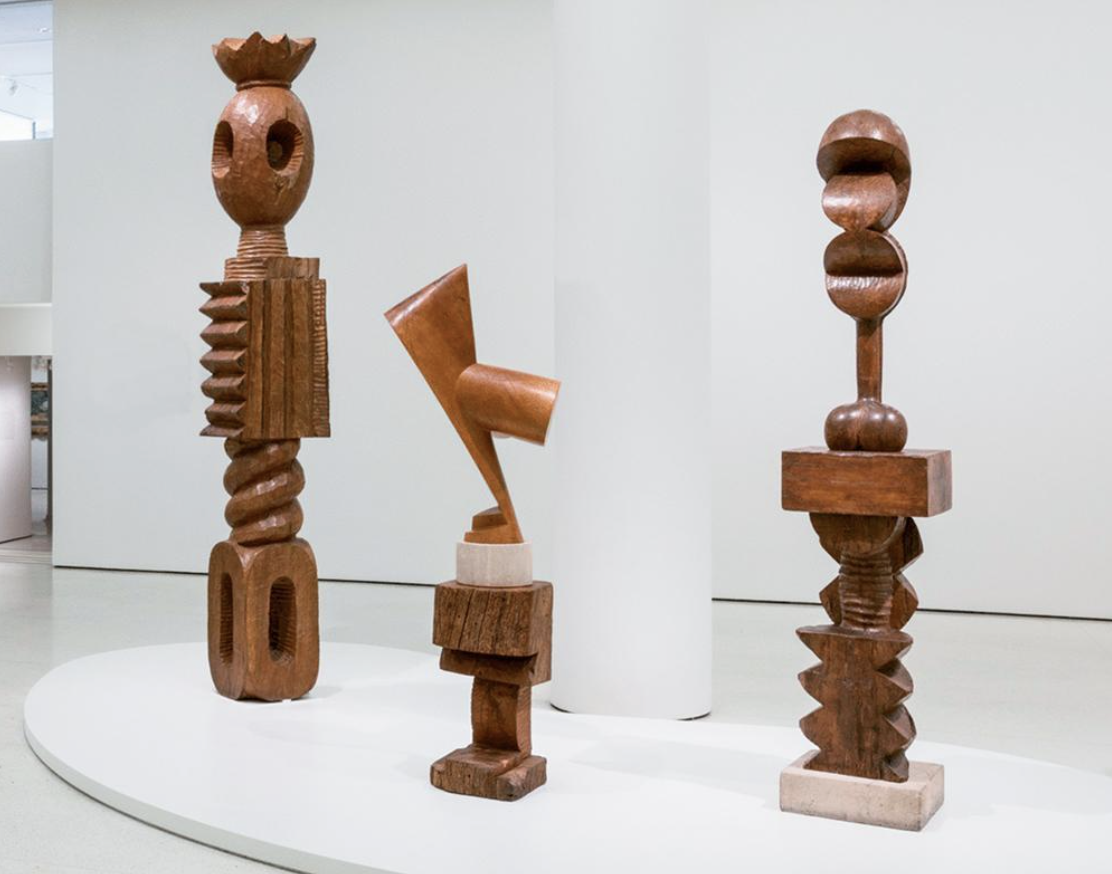Overview
Students will explore techniques for constructing different types of pedestals and think about the meaning that each conveys.
Materials and Tools
- Small, corrugated boxes and smooth cardboard tissue or food boxes
- Paper towel tubes or other tubes from recycling
- Scissors
- Tape
- Optional: stapler, glue
- Construction Techniques video
- Construction Techniques student slides

Objectives
Students will understand that:
- How to utilize experimentation as an integral part of the artistic process
- Artists use pedestals to highlight important aspects of their sculptures or to convey a specific meaning about the idea that they are representing
- Artists can use cardboard materials to make a variety of different kinds of pedestals
Students will be able to:
- Apply different techniques to transform cardboard and create several kinds of pedestals
Activities
Note: The following steps are written with sample language you may use with your students as you go through the lesson. Explain to students that the slides and the video they see during the lesson will be shared with them so they can review the lesson on their own and continue to make more art.
Step 1: Introduction, Watch Construction Techniques Video (14 minutes)
To build a monument, you need a sturdy base. In our last lesson, you considered different kinds of pedestals artists have used for their monuments.
- What kind of pedestal do you want to make for your monument?
- What are some of the different ways you can build a sturdy base?
- How can you transform a box to create a base or pedestal to build your monument on?
Watch the Construction Techniques video to help you think about these questions.
Step 2: Close Looking, with Student Slide #3 (5 minutes)
Constantin Brancusi was a 20th-century artist who transformed how we think about bases and pedestals. He shaped his own pedestals, and they became part of his sculptures.
Look closely at the images of Brancusi’s sculptures on Slide #3.
- What do you notice about the relationship between each sculpture and its base?
Step 3: Constructing a Pedestal, with Student Slides #5-9 (25 minutes)
Examine one of your boxes. If you leave it open and turn it upside down, you have a traditional pedestal form, like the Statue of Liberty. If you turn the opening up, you have an empty hollow space, like the September 11th Memorial. If you open it flat, you have a large flat space that could represent the ground. Martin Puryear’s Big Bling, which we looked at in Lesson 3, was placed directly on the ground. These are all possibilities for your monument’s base.
- What other possibilities can you come up with?
Let’s look at some of the possibilities for making a pedestal from cardboard.
Student Slide #6: Here are some simple shapes you can make by folding and curling your cardboard and taping the edges together.
Student Slide #7: These are shapes that you can make by folding in different ways and taping the edges together.
Student Slide #8: You can cut the edge of a box to create a different profile.
Student Slide #9: Try playing with a smooth cardboard box, like a tissue box or food box. You can easily cut different shapes into these.
Now it’s your turn to experiment with making different shaped bases using your box.
- What other shapes can you make out of your cardboard boxes?
If you want to make circular or oval shapes, you can use tape or staples to connect the ends together.
Step 4: Building with Shapes, with Student Slide #11 (5 minutes)
Once you have several shapes, you can start building with them. Try turning and stacking your shapes in different ways. Document your experiments by photographing them or drawing them in your sketchbook.

Step 5: Reflection Questions for Discussion (5-7 minutes)
- How does experimenting with shape and form help you think about your monument?
- Does making something with your hands change how you imagine what you want to do?
Now that you know more, think again about what you want to use as your pedestal.
Vocabulary
Base
Pedestal
Resources

Brancusi in the Guggenheim’s Collection, New York, NY
Short film about Brancusi from the Museum of Modern Art, New York
Image of Brancusi in his Studio
Brancusi’s sculpture Endless Column
Brancusi’s work in the Museum of Modern Art collection, New York
More of Constantin Brancusi’s work in the Museum of Modern Art, New York
